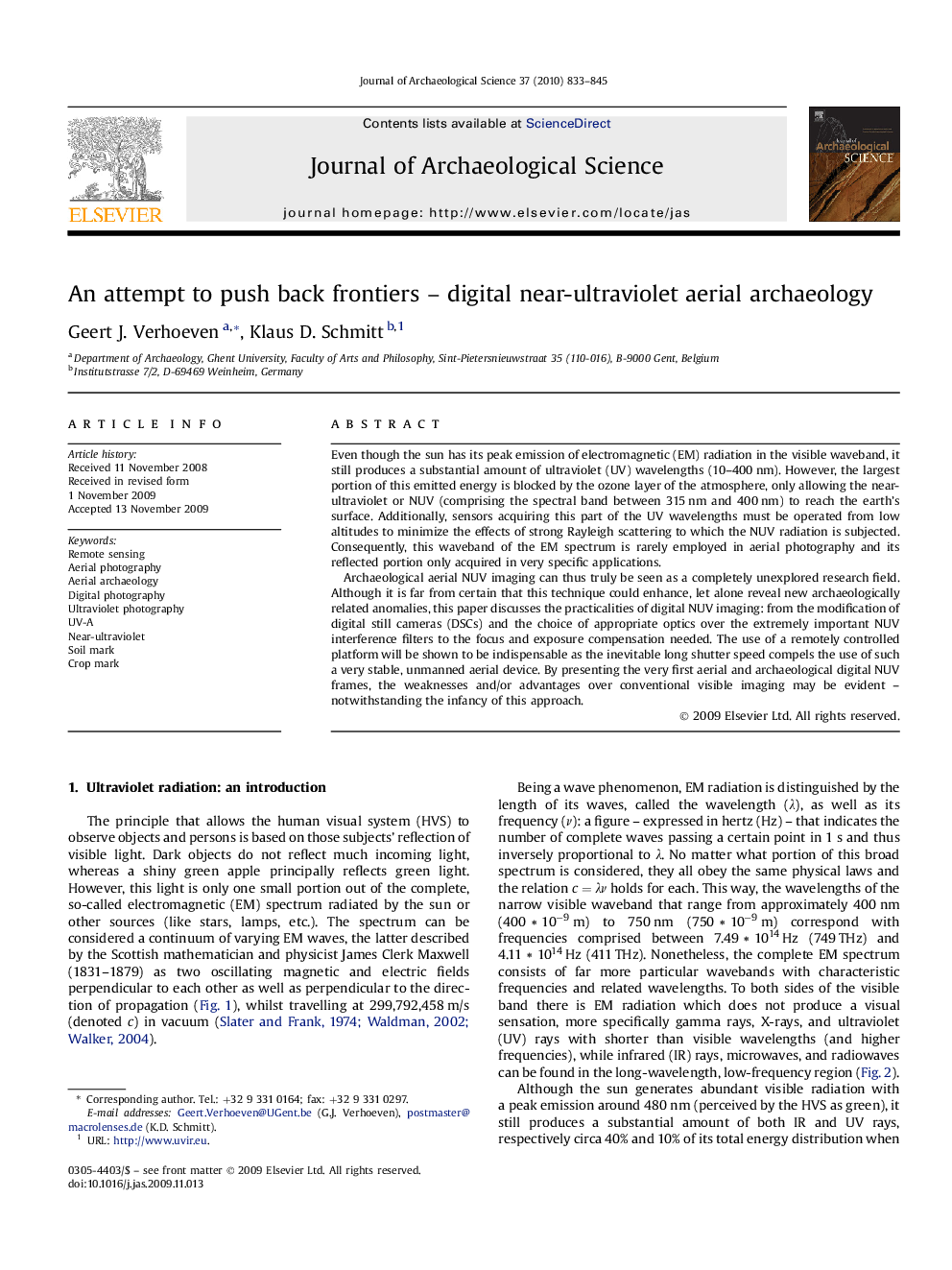| کد مقاله | کد نشریه | سال انتشار | مقاله انگلیسی | نسخه تمام متن |
|---|---|---|---|---|
| 1036968 | 943904 | 2010 | 13 صفحه PDF | دانلود رایگان |

Even though the sun has its peak emission of electromagnetic (EM) radiation in the visible waveband, it still produces a substantial amount of ultraviolet (UV) wavelengths (10–400 nm). However, the largest portion of this emitted energy is blocked by the ozone layer of the atmosphere, only allowing the near-ultraviolet or NUV (comprising the spectral band between 315 nm and 400 nm) to reach the earth's surface. Additionally, sensors acquiring this part of the UV wavelengths must be operated from low altitudes to minimize the effects of strong Rayleigh scattering to which the NUV radiation is subjected. Consequently, this waveband of the EM spectrum is rarely employed in aerial photography and its reflected portion only acquired in very specific applications.Archaeological aerial NUV imaging can thus truly be seen as a completely unexplored research field. Although it is far from certain that this technique could enhance, let alone reveal new archaeologically related anomalies, this paper discusses the practicalities of digital NUV imaging: from the modification of digital still cameras (DSCs) and the choice of appropriate optics over the extremely important NUV interference filters to the focus and exposure compensation needed. The use of a remotely controlled platform will be shown to be indispensable as the inevitable long shutter speed compels the use of such a very stable, unmanned aerial device. By presenting the very first aerial and archaeological digital NUV frames, the weaknesses and/or advantages over conventional visible imaging may be evident – notwithstanding the infancy of this approach.
Journal: Journal of Archaeological Science - Volume 37, Issue 4, April 2010, Pages 833–845